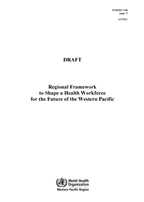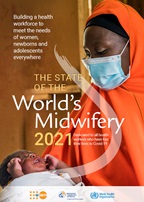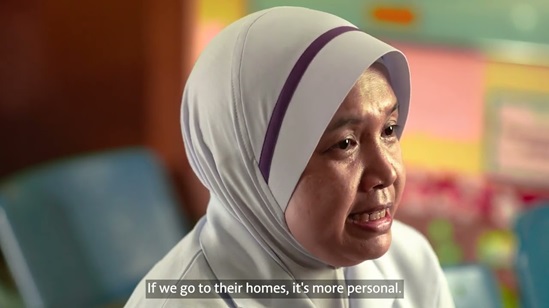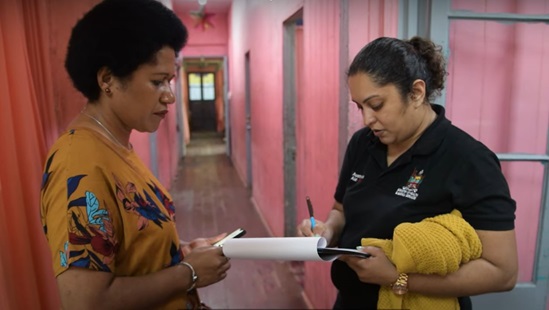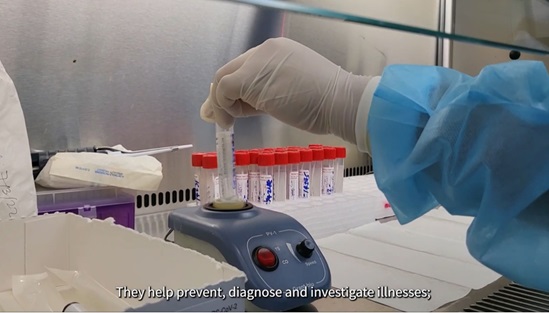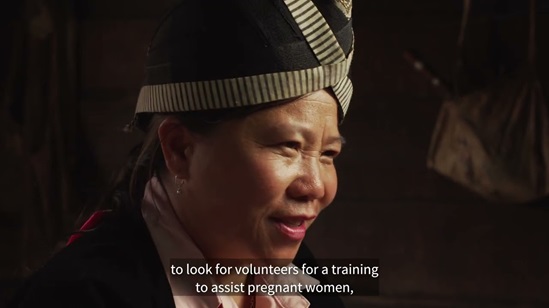Nurse 'Atelaite Schaumkel fills in forms for patients as part of her work at the Muʻa District Health Centre in Tonga.
Nursing and midwifery
The health workforce is the backbone of the health system, and a competent and motivated health workforce, including nursing and midwifery, is central to providing quality healthcare services. Member States endorsed the WHO Global Strategic Directions for Nursing and Midwifery 2021−2025 at the Seventy-fourth World Health Assembly to optimise nurses’ and midwives’ contributions to achieving universal health coverage (UHC).
The Western Pacific Region has made good progress in strengthening the nursing and midwifery workforce. The density of nursing and midwifery personnel has increased in the last 20 years. Nurses and midwives make up two-thirds of health professionals. They play critical roles in various healthcare settings, ranging from tertiary care in hospitals to primary health care, where they are often the first and only contact point and health services provider to the people.
However, many challenges remain to be addressed. The pandemic exacerbated the problems that marred nursing and midwifery, such as protection, fair working conditions, career pathways, retention, and migration. It poses a significant challenge for staffing in countries where human resources for health is already a challenge.
In 2023, Member States endorsed the Regional Framework to Shape a Health Workforce for the Future of the Western Pacific at the Seventy-fourth session of the Regional Committee. The framework highlights nurses as a key enabler towards achieving UHC. It also provides priority actions to strengthen and retain the nursing workforce, including developing national nursing strategies, investing in nursing professionals, and enhancing quality-assurance mechanisms in education.
The implementation of the framework will strengthen and protect nurses and midwives, allowing them to provide better and more efficient care, especially to vulnerable populations.
An ageing population and the increasing burden of noncommunicable diseases have continuously increased the demand for nurses in the Western Pacific Region. It is projected that the need will further increase in the future.
These phenomena have also caused a change in the population's health needs. In response to the change, the healthcare delivery model has been transformed from hospital-centric to primary health care. Nurses and midwives need to be prepared for these changes.
In the Region, people have experienced more frequent and harsh natural disasters, including cyclones, earthquakes, floods and bushfires, compared to the past. Emergency preparedness is critical to protect people, and nurses and midwives play central roles at the frontline once that situation happens.
Moreover, the COVID-19 pandemic exacerbated the pre-existing hardships on nurses, forcing them to either quit the profession altogether or seek better opportunities internationally, which in turn is impacting the sustainability of health systems in vulnerable countries.
The new Regional Framework to Shape a Health Workforce for the Future of the Western Pacific highlights nurses as a key enabler towards achieving UHC. It provides priority actions to strengthen and retain the nursing workforce:
- Develop national nursing strategies, invest in nursing professionals, and involve them in decision-making on nursing and health policies to ensure nurses optimally contribute to achieving UHC.
- Expand the scope of practice of nurses, including the introduction of nurse practitioners, to improve people’s access to PHC.
- Update and upgrade curricula for nurses to meet population health needs.
- Enhance quality-assurance mechanisms in education, including a licensing system and its renewal with continuing professional development (CPD) and accreditation mechanisms and with standards for education and institutions to protect the public.
- Provide a decent work environment and fair pay to ensure and retain nurses in the country, especially in the public sector.






